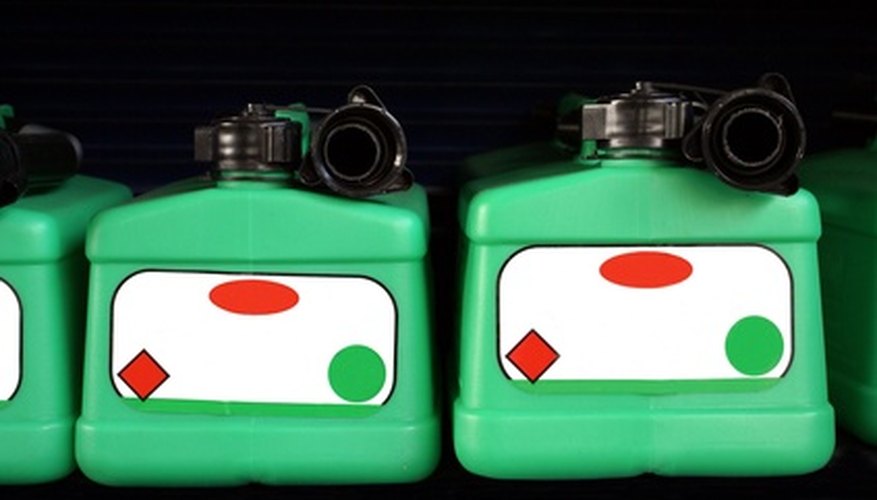Jerry cans are sturdy gas containers that originated during World War II. The Germans needed a robust fuel container capable of surviving crushing, hitting, vibrating for hours, and use in extremes of heat and cold. The jerry can was so successful that it was copied around the world. These cans require a protective coat of paint to prevent rusting. Paining a jerry can requires patience, attention to detail, and a willingness to work methodically.
- Jerry cans are sturdy gas containers that originated during World War II.
- Paining a jerry can requires patience, attention to detail, and a willingness to work methodically.
Put on goggles and strong gloves. Clean the jerry can thoroughly inside and outside. Remove all traces of oil and grease as well as dirt and loose paint. Decide whether to remove all the paint or to remove only the rough and flaky areas. Removing all the paint will give a smoother and longer lasting finish; removing only the damaged areas will make the job quicker.
Brush loose paint and rust vigorously, with a wire brush. Use a scraper or an old screwdriver to chip away at rust blisters and hardened lumps of paint, and use emery cloth to smooth the scraped surface.
- Brush loose paint and rust vigorously, with a wire brush.
- Use a scraper or an old screwdriver to chip away at rust blisters and hardened lumps of paint, and use emery cloth to smooth the scraped surface.
Examine the stripped metal surface for signs of rust. Either remove the rust with emery cloth, or paint it with a rust converter. Rush converters chemically convert rust into iron tannate or iron phosphate. Check the manufacturer's guidelines before use.
Insert an old broom handle upright in the ground. Mount the jerry can on the top of the pole so that the broom goes through the filler. Using a one-inch paintbrush, apply a coat of metal primer/undercoat to the entire can. Read the instructions on the can before use, avoid drips, and take care to leave a smooth finish all over the can. Allow to dry thoroughly.
Examine the primer coating. Touch-in any spots you missed and allow to dry. Gently remove bumps and paint runs with emery cloth, and wipe away any dust. If the can surface is still pitted, applying a second coat of primer/undercoat may help to reduce the pitted effect.
Start at the lowest part of the can, and apply the top coat of paint with a one-inch paintbrush. Use even strokes and brush drips into the next stroke to avoid runs. Coat the entire can and allow it to dry. Read the manufacturers technical date to establish the time between subsequent coats of paint. You must apply at least one coat, but every subsequent coat will increase the protection afforded to the can.
- Examine the primer coating.
- Start at the lowest part of the can, and apply the top coat of paint with a one-inch paintbrush.
TIP
Sand blasting is a quick and effective way to strip the can to bare metal. Some metal fabrication shops will do this for you. Applying strong paint-stripper to the can speeds up removal of old paint. Apply paint in a clean and draft free building, or choose a shady spot outside on a windless day.
WARNING
Clean the can on the inside to remove all traces of gas vapour. Chipping paint from the can with a metal tool may cause sparks. Sparks and gas vapour can cause explosions. Chips of hardened paint can damage your skin and eyes unless you wear personal protective equipment. Paint dust is bad for your lungs, so wear a mask, and work outdoors if possible. Rust inhibitor may be acidic and is always good at staining clothing. Wear old clothing and wash hands well after use.
